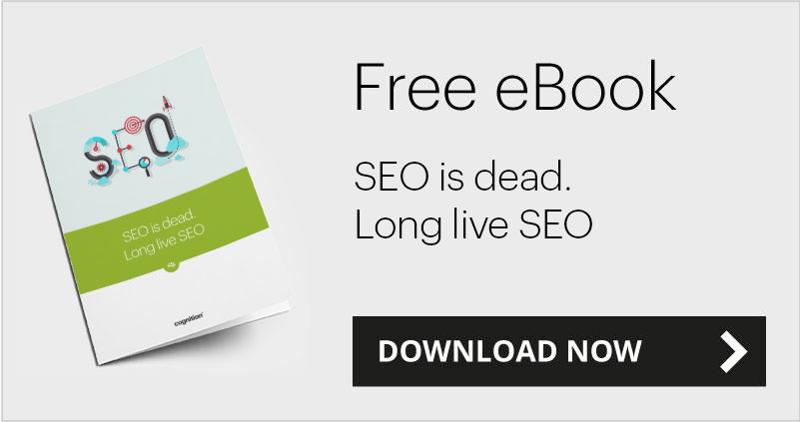
The Google Algorithm is like the wind … we can’t see it but we can see what it affects.
SEO agency specialists are like “digital weathermen” – frantically keeping up to date with the ever-changing weather, delivering good and bad news every day.
In this blog I’m going to report on four important things about the “digital weather”.
Using Google’s guidelines and SEO industry updates, I’ll give you the knowledge you need to succeed … whatever the weather.
Umbrellas and sun hats at the ready…
1. Page speed
Power from wind speed depends on direction, and the same can be said for web page speed loading and Google rankings.
How long does it take the pages to load on your website?
SEO experts will all tell you that a slow-loading web page will increase the chance of bounce rates and people leaving your site, and Google will see this as an indicator of the wrong content.
The result?
Your website will be pushed down the search rankings.
To reduce bounce rates and boost your search rankings, follow these tips:
- Compress website data that is over 150 bytes.
- Reduce the JavaScript, HTML and CSS files that are too large.
- Optimise images for social sharing.
- Minimise and streamline code, as too much code will slow the website.
- Remove redirects as, if the page is a redirect the page must start the HTTP request again, slowing the page load speed.
- Improve the servers. As faster servers = faster page speed.
- Utilise Accelerated Mobile Pages (AMP) add-on features (only suitable for HubSpot websites).
- Use “skeleton” screens to keep user’s attention on slower pages. They provide a skeletal outline of the layout of the webpage, showing it is loading.
2. Bespoke landing pages
Any SEO agency will tell you this: content marketing is creating the right content, for the right person, with the right message, at the right time.
And, this is what makes Google incredibly happy!
But, creating bespoke content on landing pages is something that most marketers forget. Yes, it can be time consuming, but it pays off.
Top tips to follow:
- Look at analytics data to identify customer journeys.
- Work out the individual user’s intent by looking at the search queries.
- Build pages and create content that meets all user requirements based on their intent.
Good to know….
We partner with HubSpot because the platform allows us to work this information out quickly and create landing pages with ease.
This helps reduce bounce rates and enables us to distinguish exactly how many landing pages we need and what call to actions (CTAs) to include.
3. Web page optimisation
When travelling to a hot location you pack the essentials: sun cream, swimwear, flip-flops and a sun hat.
The same goes for your website pages.
Ensure it’s packed with the essential optimisation features by following these tips:
Keywords
Ensure the keywords you are trying to rank for are in:
- The Title Tag – The <title> tag goes in the <head> tag of the HTML. This is the connection between the content you produce and Google crawlers. The Title Tag should be under 60 characters and summarise the topic of the page. To make them more appealing try adding modifiers such as “best, “guide” [Tips], [Hack] or brand modifiers such as [Cognition Guide]. This will make your page stand out in the search results.
- The H1 Tag – The <h1> tag acts like a second Title Tag and tells Google that this is the most important part of the text.
- The Meta Description - <meta name =”description” content=/> as this is the summary of the page shown in the search results.
- The URL. This is an indicator to search engines on what the web page is about and should be taken advantage of. Check out Google’s guidelines here. Evidence suggests that having a shorter URL is best, and it’s also important to have the keyword you wish to rank for in the URL.
Things to remember for URLs:
- Don’t use underscores.
- Don’t use generic names like “page1”.
- Don’t use too many numbers or sub folders.
- Use short URLs – one or two words are perfect.
4. Be mobile focused
Google announced that, as of 2018, websites will use mobile first indexing .This will be the first priority of any SEO agency in the coming year.
This means Google will rank your website based on the mobile version of the content, even if users are using their desktop.
So, it’s crucial to get your website “mobile ready” now.
Find out how mobile friendly your website is with Google's Mobile-Friendly Test.
To improve the responsiveness of your website, follow our key tips:
- Content must be readable - use the correct font size and include clickable buttons for mobile screens.
- Cater for mobile users, especially if you have a brick and mortar shop. Ensure PPC campaigns have location extensions on and your “Google My Business” information is accurate.
- Blog content should be optimised for Accelerated Mobile Pages (AMP).
- Make sure the mobile version of your website has the same amount of content as your desktop version.
For more SEO insight, read our free guide by click below:





